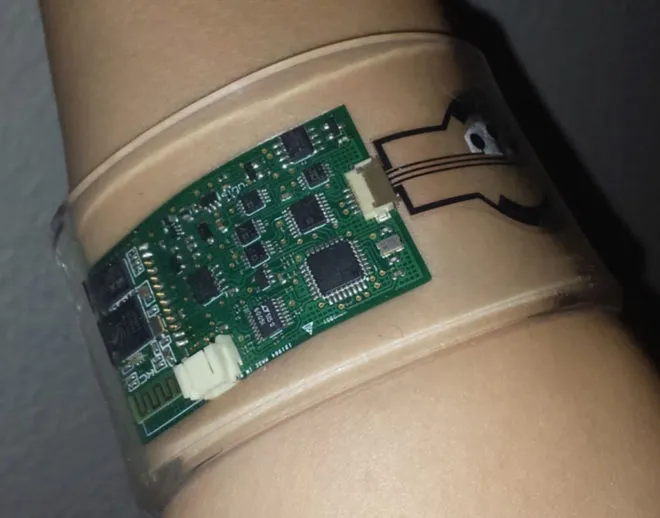They develop a device that diagnoses cystic fibrosis or diabetes by sweat and sends the results through a smartphone.
We have gadgets to control the heart rate, to measure activity and sleep, and even to tell the calories we burn, but all of them are usually focused on physical parameters that only offer limited information about our health.Now, a team of scientists has developed a device that, through sweat, can detect diseases such as cystic fibrosis or diabetes.
Researchers at the Stanford University School of Medicine (USA) have created a device, similar to a bracelet, which causes and collects sweat in a non -invasive way, measures its molecular composition and sends the results electronically for analysisand subsequent diagnosis of the patient.
The study has been carried out in collaboration with the University of California-Berkeley (USA).The experts, whose work has been published in the Journal Proceedings of the National Academy of Sciences (PNAS), have carried out two different studies with the sensor.
On the one hand, they have determined that it can be useful for the detection of diseases such as cystic fibrosis, a condition that causes an accumulation of mucosa in the lungs and that can be detected by high levels of chloride ions in the sweat of a person.On the other hand, they have used this device to compare blood glucose and sweating levels, so it could also be used to detect diabetes and prediabetes.
Information from Sudorel sweat in a great source of information and, in addition, easily accessible to this type of applications, explained researcher Ronald Davis in a statement.
The sensor, which sticks to the skin, stimulates the sweat glands and thus detects the presence of different molecules and ions based on its electrical signals.In this sense, the more chloride there is in sweat, the more electrical voltage it is generated in the sensor.
During the study, the sensor detected elevated electrolyte content in the soluding of three patients with cystic fibrosis compared to six healthy patients.In addition, it also detected high levels of glucose in sweat in six of seven healthy individuals after they consumed glucose orally.
Until now, conventional methods to diagnose cystic fibrosis required the patient to go to a specialized center for about 30 minutes, since the procedure of stimulation, collection and analysis of sweat is done separately.
This process can be particularly cumbersome when applied in children or in remote populations.The new device is resistant and can work with a smartphone, which sends the measurements to a cloud and receives the results once the specialized personnel have reviewed them.
Personalized medications
In addition to diagnosis, the device could also be useful in the development and customization of medicines.Cystic fibrosis occurs by any of the thousands of mutations that can affect the CFTR gene, and with this device it would also be possible to determine which drugs work best for each mutation.
Now, the team works on large -scale clinical trials to look for other links between sweat measurements and health.In fact, in the long term they hope to integrate it into a smartwatch or smart watch, or in a similar format, to reach a broader population.
The scientist has pointed out that this research goes beyond the development of a device, since it is "a new way of understanding health."Thus, he added that he is a new approach that could help prevent diseasesSerious at the individual and population level.
In Davis's opinion, this sensor can be a way of stopping pandemics, since, when detecting if an individual is affected by a virus, he could decide to stay at home."If everyone did that, diseases would not spread so fast," he concluded.
Cystic fibrosis is a disease of the so -called rare that in Spain affects about 3,000 people, according to estimates.In the mid -twentieth century 50% of those affected did not survive the year of life, but now the average survival is around 40 years.


